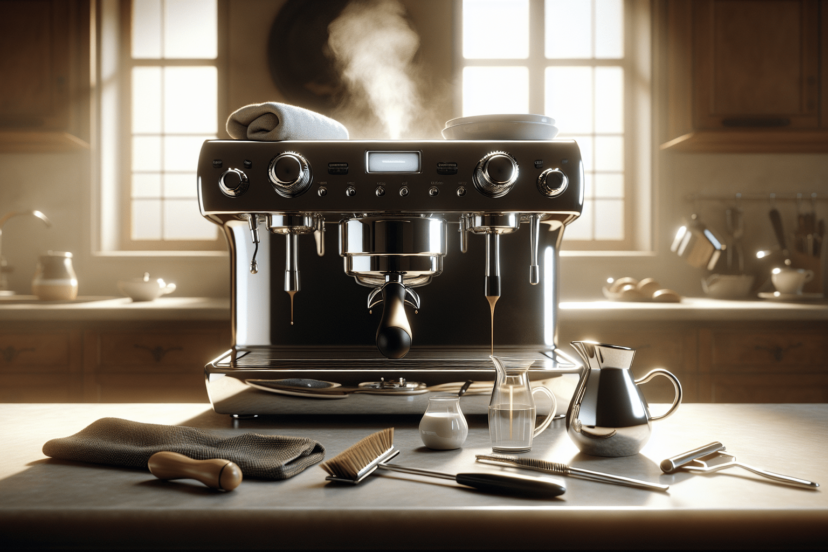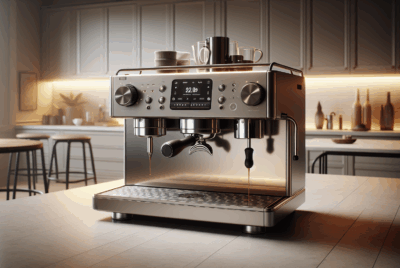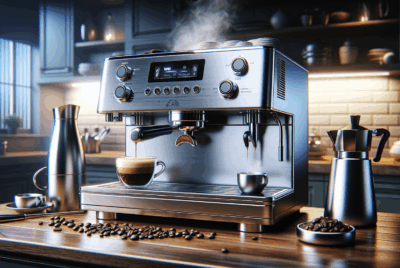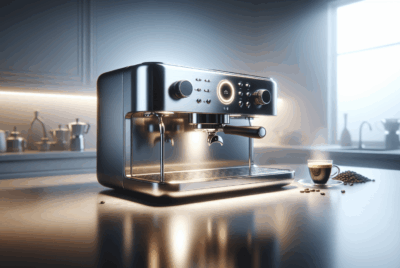The Ultimate Guide to Descaling Your Espresso Machine
As an Amazon Associate, I earn from qualifying purchases, at no additional cost to you. Disclaimer
The Ultimate Guide to Descaling Your Espresso Machine
Have you ever noticed that your espresso doesn’t taste as robust as it used to? Perhaps your machine is making strange noises or it’s taking longer than usual to brew. These could be signs that it’s time to descale your espresso machine. Descaling might sound technical, but it’s an essential maintenance task that ensures your machine remains in prime condition, delivering the perfect brew every time.
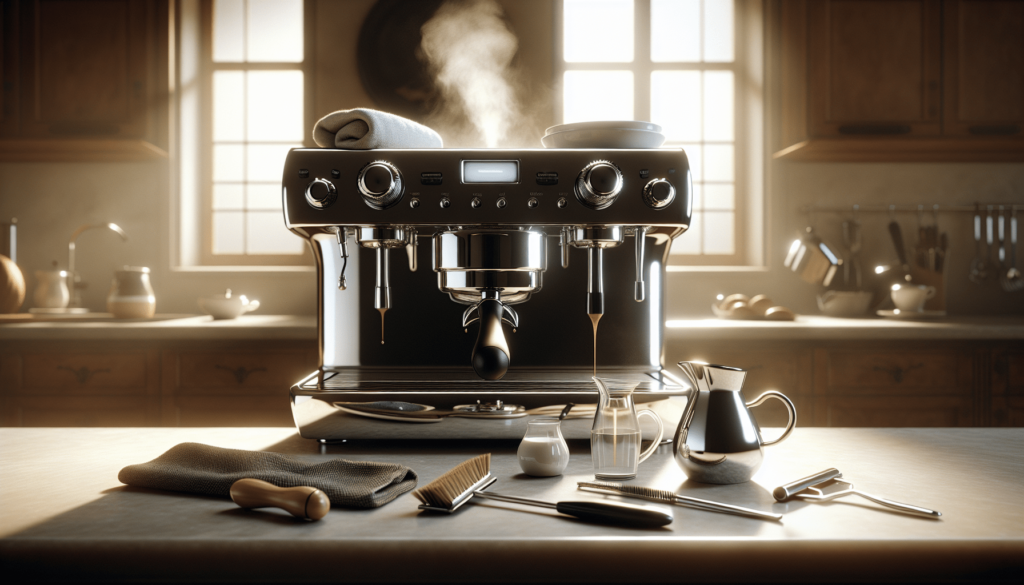
Click Here to Master Coffee at Home
Why is Descaling Important?
Descaling removes mineral buildup—usually composed of calcium and magnesium—that accumulates inside your espresso machine over time. This buildup can affect water flow, temperature, and ultimately the taste of your espresso. Neglecting descaling can also lead to more serious mechanical problems, which could mean costly repairs or replacement.
How Often Should You Descale Your Espresso Machine?
How frequently you need to descale will depend on the hardness of your water and how often you use your machine. However, a good rule of thumb is to descale every one to three months. If your area has hard water, you might need to descale more frequently. Some machines come with indicators that alert you when it’s time to descale, but if yours doesn’t, pay attention to the symptoms of scale build-up, such as reduced water flow or changes in taste.
Understanding the Descaling Process
Descaling is essentially a cleaning process. You introduce a descaling solution into the water tank, run it through the machine, and follow with a rinse of clean water. This helps dissolve mineral deposits and flush them out of your machine.
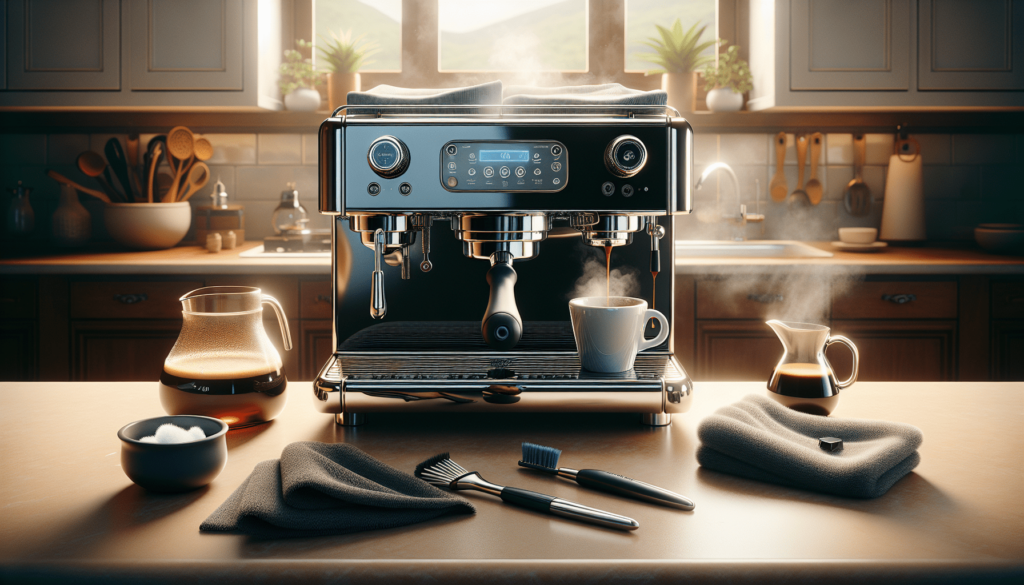
Click Here to Start Brewing Like a Pro
What You’ll Need
Here’s a simple table outlining the materials required for descaling:
| Material | Purpose |
|---|---|
| Descaling solution | To effectively dissolve mineral buildup |
| Fresh water | For rinsing after descaling |
| Cleaning container | To catch water expelled during descaling |
| Soft cloth | For wiping and cleaning surfaces |
Step-by-step Guide to Descaling Your Espresso Machine
Understanding your espresso machine’s descaling process is crucial. Here’s a straightforward guide:
Step 1: Prepare the Descaling Solution
Start by mixing the descaling solution according to the instructions on the package. This usually involves diluting the solution with water. Make sure to use the recommended proportions to ensure effective descaling.
Step 2: Empty the Machine
Remove any residual coffee or water from the machine and ensure that the portafilter and any coffee grounds are removed. Place a cleaning container under the machine to catch the liquid expelled during descaling.
Step 3: Begin the Descale Cycle
Pour the descaling solution into the water tank, and start the descaling cycle. Some machines have a specific descaling mode, while others will require you to manually run the solution through the machine. Follow the manufacturer’s instructions to ensure you’re doing it correctly.
Step 4: Let the Solution Work
Allow the solution to run through the machine. Depending on your model, this might take a few minutes. The solution will break down the limescale and flush it out, which is the key to maintaining your machine’s performance.
Step 5: Rinse
After the descaling solution has gone through, rinse the water tank thoroughly and fill it with fresh water. Run this clean water through the machine at least twice to ensure all remnants of the descaling solution are removed.
DIY vs. Commercial Descaling Solutions
You might wonder whether to use a commercial descaling solution or concoct your own at home. Both have benefits, so it depends on your preference and the sensitivity of your machine.
Commercial Solutions
Commercial descaling solutions are specially formulated to remove limescale without damaging your machine. They’re easy to use and effective, albeit slightly more expensive than DIY alternatives.
Homemade Descaling Solutions
Common DIY solutions include a mixture of vinegar and water or citric acid and water. While they can be effective, you should ensure that your machine’s manufacturer recommends or allows them, as some machines have delicate components that can be harmed by acidic solutions.
Click Here to Brew Better Coffee Today
Maintaining Your Espresso Machine for Longevity
Descaling is just one part of maintaining your espresso machine. Regular cleaning and proper usage are crucial to keeping it in excellent condition.
Daily Cleaning
Wipe down your machine every day to prevent coffee residue from building up. Rinse the portafilter, baskets, and steam wand after each use.
Weekly Maintenance
Once a week, perform a more thorough cleaning. Wash the drip tray and the water tank, and consider using a cleaning tablet to clean the brew group, especially if your machine is a super-automatic.
Monthly Maintenance
Aside from descaling, once a month, check the seals and gaskets. Replace them if they’re worn out to prevent leaks and ensure the pressure remains consistent.
Troubleshooting Common Problems
Even with regular maintenance, you may encounter issues. Here are some common problems and their solutions:
Low Water Flow
If your machine experiences low water flow post-descaling, it may need additional rinsing. Run clean water through the machine a few more times.
Odd Tastes or Smells
Strange tastes or scents can occur if leftover descaling solution remains. Ensure you rinse the machine thoroughly after descaling.
Persistent Limescale
If the scale buildup is stubborn, consider repeating the descaling process. Heavily scaled machines might require multiple treatments to fully remove deposits.
Extending the Life of Your Espresso Machine
Taking steps beyond regular descaling can greatly enhance the longevity of your machine.
Use Filtered Water
Using filtered or soft water can reduce the frequency needed for descaling. It minimizes mineral buildup, preserving your machine and ensuring consistently great-tasting espresso.
Monitor Usage
Pay attention to any changes in the machine’s performance. Strange sounds, changes in brewing time, or espresso quality can all be indicators that maintenance is needed.
Conclusion
Regular descaling isn’t just about ensuring your espresso tastes great—it’s about preserving the integrity and functionality of your machine. By integrating descaling into your maintenance routine and using smart practices like filtered water, you’ll enjoy your espresso machine’s delicious brews for years to come. Understanding the significance of descaling and executing it properly will save you headaches and extend the life of your beloved coffee maker. So, when was the last time you gave your espresso machine a much-needed descale?

